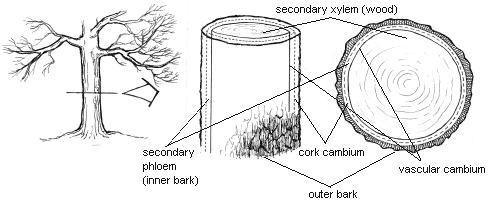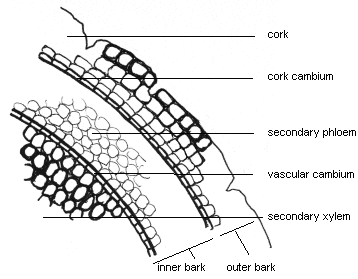Lateral meristems. If apical
meristems—and primary growth—were the only means by which a plant grew in size,
however, we'd have very skinny trees! But of course in addition to lengthening, some roots
and shoots eventually also increase in girth and become woody. This is termed secondary
growth, and it takes place in lateral meristems. There are two types of
lateral meristems in woody plants; both are found in cylinder-shaped regions below the
bark.Tree Cross-Section

The vascular cambium lies between the wood and the
inner bark. During secondary growth, new xylem cells formed by the vascular cambium become
thick-walled and sturdy, and the living contents die. As the branch or trunk enlarges in
circumference, these cells make up the bulk of the stem tissue, forming the secondary
xylem, or what we commonly call wood. Thinner-walled phloem cells divide outward,
surrounding the wood; this forms the inner bark.
The cork cambium
lies closer to the surface, and produces the outer bark.
If you take a freshly-cut branch or log and peel away the
bark right down to the wood, you’ll feel a moist, slippery surface on both the wood
and the inner bark. This is the region of the vascular cambium. Never peel the bark off a
living plant!
